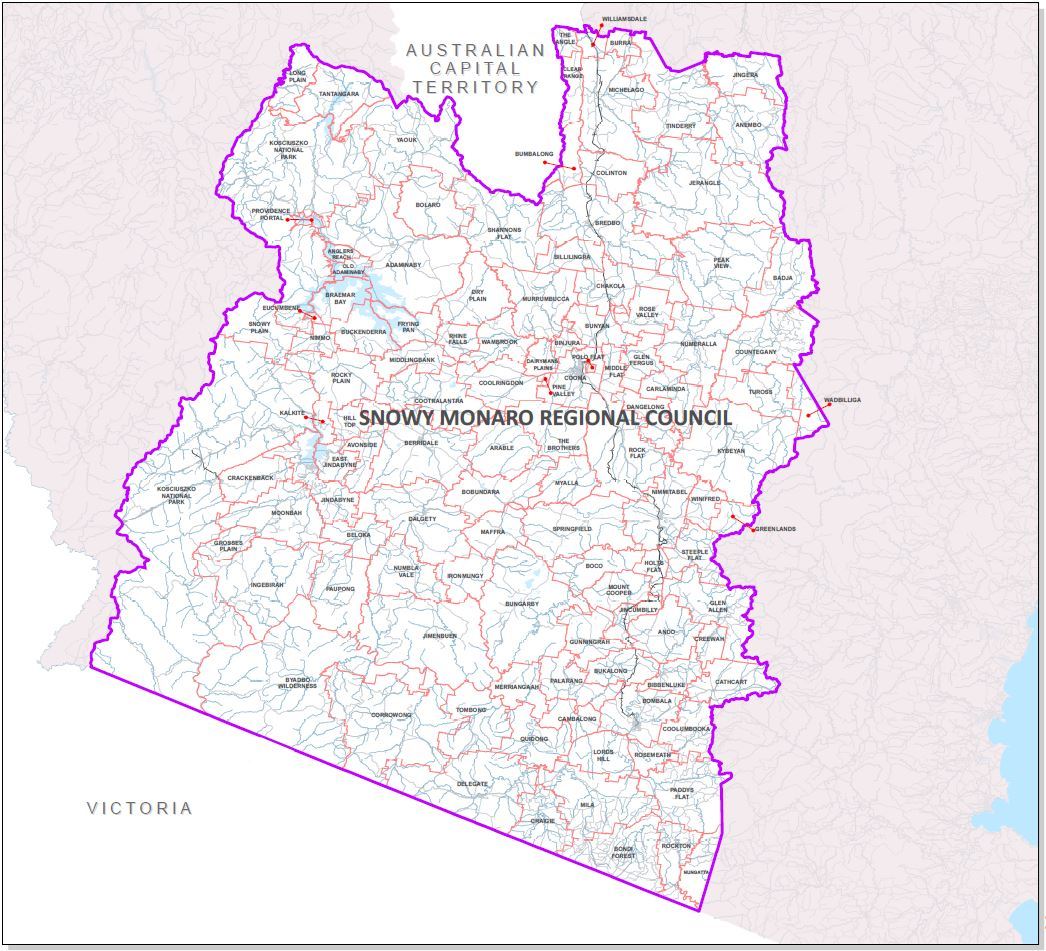Snowy Monaro Regional Council was formed on 12 May 2016 as the result of proclamation by the NSW Minister for Local Government. This new region encompasses the former Bombala, Cooma-Monaro and Snowy River Local Government Areas and is located in south eastern NSW, reaching from the ACT border in the north to the Victorian border in the south.
The newly formed region is located on land traditionally home to the Ngarigo, Walgalu, Bidawal and Southern Ngunnawal people and covers a diverse geographic area with a varied social and economic profile. From the tourism-driven snowfields to vast timber forests, across the sweeping Monaro Plains and the iconic and rugged Snowy River, through quaint country villages and modern regional centres, the Snowy Monaro region has it all.
The Snowy Monaro Local Government Area covers an area of 15,158 square kilometres and has an approx. population of 20,997 (2020 estimate). https://profile.id.com.au/snowy-monaro
Download a map of the state and regional classified roads in the Snowy Monaro region(PDF, 10MB)

Physical Setting
The area is characterised by rolling plains and rugged mountain ranges. It includes the three major towns of Bombala, Cooma and Jindabyne and a number of smaller towns and villages. The region includes numerous state and National Parks, including the Deua, Kosciuszko, South East and Wadbilliga National Parks and numerous nature reserves, state forests and heritage conservation areas. Vast areas of the region are occupied by agricultural land, with a predominant focus on sheep and cattle farming.
Industry
The region's industry is primarily driven by tourism, including accommodation, food and retail services, and agriculture including farming, forestry and timber production. This industry has diversified significantly in recent years, with the emergence of an increasing number of developing horticultural markets such as truffles, lavender and cold climate vineyards.
The winter snow season has a considerable impact on the region's economy and tourism focused businesses and infrastructure are common. This industry is also in a process of diversification, as businesses increasingly offer services and experiences which showcase the region's summer offerings.